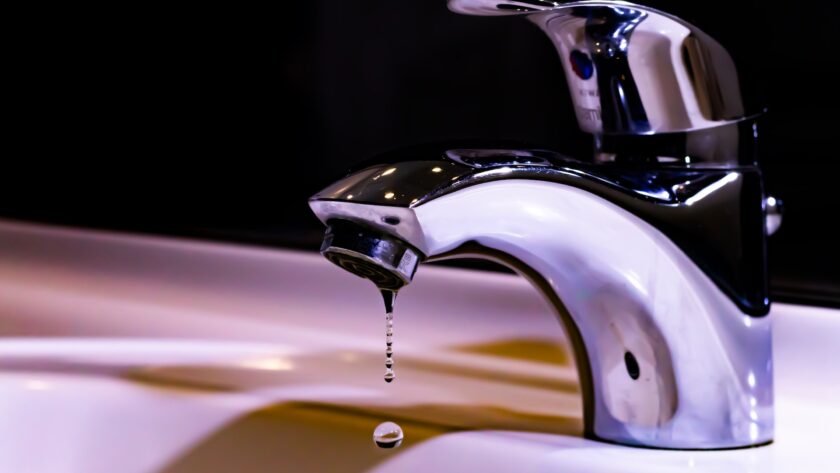Clean, safe water is something that many people take for granted. When they turn on the tap, they expect that the water that comes out will be drinkable and won’t harm them over the long term. Unfortunately, this isn’t always the case, and there’s one common culprit: lead. Elevated lead levels in home water can significantly damage the brain and other organs and cause various serious health conditions. This is especially true for children or other vulnerable populations. That’s why it’s so critical for homeowners to test their water for lead and take action if necessary. Read on as we explore the basics of home water lead testing and why it’s such a critical issue.
How Does Lead Get Into My Water?
Lead can end up in a house’s water from multiple sources, both inside and outside the home. On an environmental level, lead can contaminate groundwater via industrial waste, burning volatile compounds, and even naturally occurring sources of lead. Lead can also infiltrate nearby lakes and other bodies of water through runoff.
From here, the polluted water may make it to homeowners. In many cases, this can be removed by municipal water treatment but may remain a risk for properties with private wells. Always ask about the water quality tests for nearby lakes before making an investment.
One potential lead source spans both inside and outside of homes: lead pipes and other plumbing. Lead hasn’t been used in pipes for decades. Still, significant amounts of older pipes remain in water systems everywhere, leaching potentially dangerous amounts of lead into the water that runs through them. Lead can even be present in the solder or joints that connect the plumbing.
While many major cities have been replacing these older systems, lead piping may also be present in individual homes. This requires homeowners to update pipes and fittings at their own expense. Even older plumbing fixtures (from before 1986) may have lead components with them and may need to be replaced. Even homes without lead pipes should stay up-to-date on the importance of septic cleaning.
How to Test For Lead in Drinking Water
The first step for homeowners who want to protect their families from the effects of lead in water is testing. In some cases, those with municipal water will have access to free testing and lead prevention assistance from their water company.
Other homeowners will need to find a certified laboratory that can test for them. The federal Environmental Protection Agency has resources for locating these. They’re generally affordable, with testing almost always costing less than $100 and sometimes as low as $15-20.
Each lab may have slightly different procedures for collecting water samples which should be followed as closely as possible. Typically, owners will need to provide “first-draw” water, a technical term for the water that first comes out of the pipes after a night without being used. These samples will provide the best evidence of any potential contamination. Results are generally available within 30 days. In the meantime, homeowners may opt for bottled water for drinking and cooking as a precaution.
How to Limit Exposure
The best way to limit lead exposure is to remove any lead pipes, fixtures, or other sources at every point of the water supply, from source to tap. Unfortunately, this isn’t always possible, especially for those with municipal water. However, there are steps homeowners can take to improve the safety of their water, even if some lead pipes or other items remain.
First, let the water run before using what comes out of the tap for drinking or cooking. For those with a lead service line, this should be done for three to five minutes to ensure as much residual lead has been washed away as possible. Those without lead lines can do this for a minute or so.
In addition, homeowners should use cold water whenever possible, as warmer water releases more lead from pipes. Whole-home or tap-based water filtration systems can also be a convenient way to filter much residual lead out of water. People who are especially concerned can opt for bottled water or other controlled, filtered water sources for cooking and drinking while safely using tap water for showering, washing clothes, watering plants, and other uses.
Potential Long-Term Effects of Lead Exposure
One of the reasons lead is such an insidious threat is that the health problems it causes often don’t emerge for years or even decades. Nevertheless, that doesn’t make them any less severe. Lead poisoning is especially harmful to children, whose developing bodies are affected by lower intellectual development, behavioral problems, or other mental health issues.
In rare and severe cases, lead poisoning can result in coma, convulsions, or even death. For these reasons, parents of children younger than six should take extra care to limit their child’s lead exposure as much as possible.
Everyone exposed to lead over time will face issues like anemia, kidney damage, hypertension, and neurological problems. Unfortunately, many of these issues are irreversible once they’ve begun to appear. Pregnant women are also at high risk from lead exposure, leading to congenital disabilities, miscarriages, premature birth, and other problems.
In addition, men will suffer lower sperm counts and other reproductive and fertility issues. As should be obvious, these conditions are life-changing and life-threatening, providing extra encouragement to eliminate lead from home water.
Make Sure Your Water Is Safe With Lead Testing
Unfortunately, public water users and even private water sources are still dealing with alarming amounts of contaminants coming out of their taps. As the information above shows, lead is, without a doubt, one of the most dangerous threats to your health. The good news is that owners can do something about it – starting with lead testing.
Having their home water tested is the first step to identifying and eliminating any issues, whether by replacing pipes and fixtures or adding extra filtration. Even simple actions like running the water before use can go a long way toward eliminating residual lead. While it may require a bit of work and expense, preventing lead exposure is vital to protect the health of everyone in the home – something that’s truly priceless.





